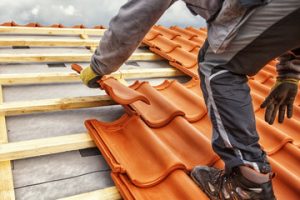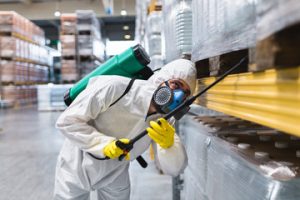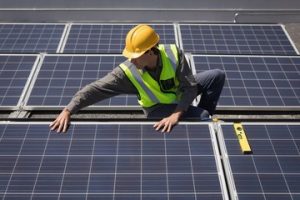Roofing Contractor evaluates roof damage, providing detailed information that helps homeowners make informed decisions. They may offer warranties or guarantees. They also provide a contract with project details, timelines, and payment schedules.

Working with a roofing contractor is a smart way to ensure quality work and adherence to local building codes. But, how do you know who to trust?
Roofing contractors should have experience in a variety of different roofing types, designs, and structures. They should also be able to diagnose problems accurately and recommend the right solutions. They can help ensure that your roof is installed correctly and meets industry standards, which will improve its lifespan and ability to protect your home from the elements.
It is important to choose a contractor with a good reputation in the community and in the industry. Ask about their past projects and request detailed written estimates for your project. It is also important to understand what factors may affect the cost of the project, such as weather or other unexpected issues that may arise during the job.
Experienced roofing contractors know how to work safely and efficiently, which can save you time and money. They can provide you with a comprehensive contract that clearly outlines the scope of work, materials, project timeline, and payment schedule, as well as any warranty information. Be wary of contractors that require large upfront payments or cash-only payments, as these are often a sign of poor business practices.
A qualified roofing contractor will be able to answer any questions you have about the project and will take the time to explain their services in detail. They will also be able to give you product recommendations and discuss the benefits of each option. In addition, they will be able to explain the manufacturer and workmanship warranties that come with your new roof.
Roofing is dangerous work, and it’s important to choose a contractor with the proper safety training and equipment. Look for a contractor that prioritizes the safety of their workers and their clients and adheres to OSHA standards. They will use specialized tools and equipment designed specifically for roofing, which will help them complete the job quickly and correctly.
Choosing a local roofing contractor is important because they will be familiar with the building codes and regulations in your area and will have established relationships with other contractors and suppliers. They will also be able to respond quickly to any questions or concerns you might have. In addition, they will be more familiar with the unique challenges that can occur during a roofing project in your area, such as traffic and weather conditions.
Licensing
Many states require roofing contractors to obtain a license in order to perform their services. While licensing requirements vary by state, they often include passing trade exams and meeting insurance or bonding thresholds. Some also mandate that contractors obtain a business license and comply with local building codes and regulations.
While obtaining a roofing license can be a lengthy process, it is one of the most important steps that roofers can take to protect their clients. The licensing process typically involves passing trade exams, submitting proof of experience and insurance, and paying an application fee. In addition, some states may require a licensing bond, which guarantees that the licensed contractor will meet all contract obligations.
To qualify for a roofing license, applicants must demonstrate extensive hands-on experience. This experience can be obtained through work, apprenticeship programs, or formal trade school training. Alternatively, some states offer licensure by endorsement for experienced contractors with an established track record of excellence.
In Florida, for example, roofing contractors must pass both a trade and business exam and have four years of experience to be considered for licensure. In addition, they must provide proof of professional liability insurance with specific minimum coverage requirements and workers’ compensation insurance if they have employees.
Once the roofing contractor has met all of the qualifications, they can then submit their application to the licensing board for approval. Depending on the state, this process can take two to eight weeks. It is crucial that all paperwork, including certificates of experience and insurance documents, are submitted correctly and on time to avoid delays.
Other states, such as Florida and Illinois, have stricter licensing requirements. In Florida, for instance, a roofing contractor must pass both a trade and business exam, as well as have four years of experience, and in Illinois, the threshold is $10,000 for commercial jobs and $50,000 for residential jobs.
Insurance
Roofing is a dangerous job, and accidents happen. To protect your business from financial ruin, you need insurance. A reliable broker can help you navigate the complexities of coverage options and find cost-effective solutions that meet your specific needs.
General Liability insurance is indispensable for roofing contractors. It covers third-party bodily injury and property damage, as well as advertising injuries. If you work in New York City, where damages can easily exceed your primary limits, this is an especially important policy. It’s also a good idea to include commercial auto insurance in your policy. This covers vehicles used for your roofing operations, including trucks, vans, and trailers. It’s important to note that this type of coverage does not typically cover personal vehicles owned by your employees.
Workers’ Compensation insurance is a legal requirement for most businesses with employees. It provides medical expenses, disability, and death benefits for employees injured on the job. In addition, it protects your business from costly lawsuits. As a roofing contractor, it’s important to ensure that all of your workers have this coverage. It’s also a good idea for you to verify that all of your subcontractors have this coverage.
Contractors Pollution Liability insurance is another valuable option for roofing contractors. The sealants, adhesives, and coatings used to spray or repair roofs can produce harmful fumes that are toxic if inhaled. This type of insurance offers Bodily Injury and Property Damage coverage for claims related to the discharge, dispersal, seepage, migration, or release of pollutants.
Inland Marine insurance is a good choice for roofing contractors who transport equipment and materials across the state. It covers any damage or loss to your tools and materials while they are in transit, as well as the cost of repairing or replacing them. Inland marine insurance is typically less expensive than other forms of commercial insurance, and it can be an excellent supplement to your other policies.


